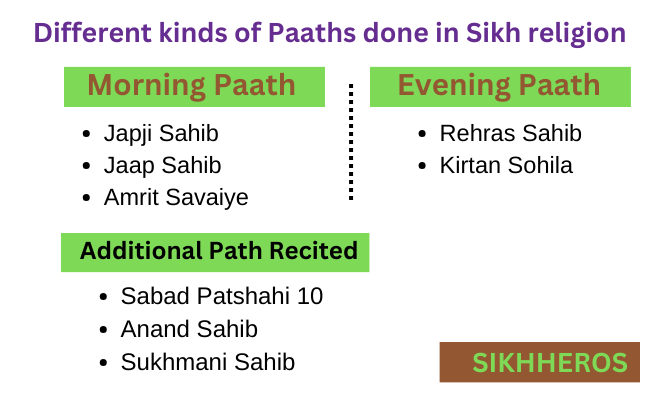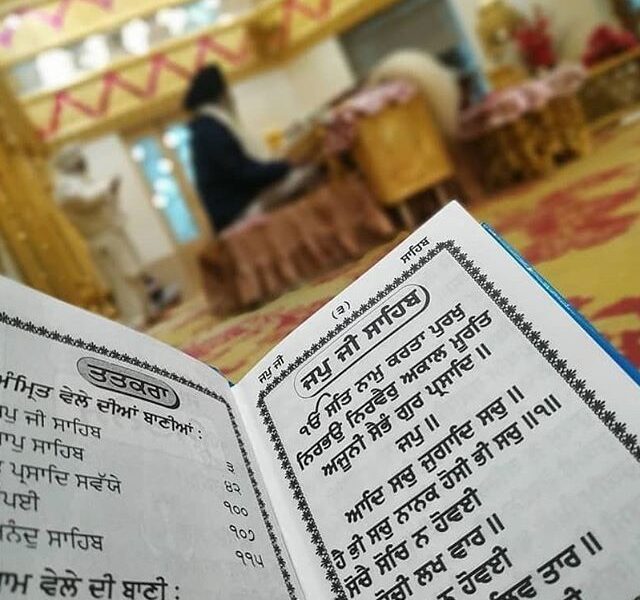In Sikhism, the Guru Granth Sahib Ji serves as the holy scripture and is revered as the living Guru of the Sikhs.
For beginners, the basic Rehit consists of reciting Jap Ji Sahib in the morning, Rehraas Sahib in the evening, and Sohila Sahib before bedtime. These three Banis are fundamental and are the minimum requirement for a Sikh.
It’s important not to doubt your ability to do Paath or think that you’ll start when you feel better. Paath itself will make you better. Just as you wouldn’t stop taking medicine when you’re ill, you should continue with Paath regardless of your circumstances.
Everyone should engage in Paath, irrespective of their life situations. As we delve deeper into Sikhi, we can gradually increase our Paath practice. In the morning, we can add Jap Ji Sahib, Jaap Sahib, Tav Prasad Svaiye Sahib, Chaupee Sahib, and Anand Sahib.
In the evening, Rehraas Sahib and Aarti can be recited. At night, Sohila Sahib and Rakhiaa De Shabad should be included in our practice.
Paath involves the recitation of hymns from the Guru Granth Sahib Ji.
Sikh Nitnem (Daily Religious Regimen):
- Morning Paath (Devotions):
- Guru Nanak Dev Ji’s – Japji Sahib
- Guru Gobind Singh Ji’s – Jaap Sahib
- Guru Gobind Singh Ji’s – Amrit Savaiye
- Evening Paath:
- Rehras Sahib
- Kirtan Sohila
Additional Texts Recited:
- Sabad Patshahi 10
- Anand Sahib
- Sukhmani Sahib
Sehaj Paath is when individuals read a few pages of the Guru Granth Sahib Ji daily in a sequential manner, taking their time to complete the entire reading.
Akhand Paath refers to the uninterrupted reading of the Guru Granth Sahib Ji, typically lasting around two days. This tradition originated during times of persecution when Sikhs had to frequently move and remained connected to the teachings through continuous recitation known as Akhand Paath.
However, the present practice of Akhand Paath has become more ritualistic, with continuous recitation but a limited understanding of the teachings. In this context, Sehaj Paath is encouraged, where individuals or groups recite and understand the Guru Granth Sahib Ji at a slower pace, incorporating its teachings into their lives.
Sampat Paath, where specific hymns are recited after every page of the Guru Granth Sahib Ji, goes against Sikh norms and is not recommended.
In addition to Sehaj Paath and Akhand Paath, Sikhs also recite a collection of hymns daily known as “nitnem,” including Japji Sahib, Jap Sahib, Tav Prasad Sawaiye in the morning, Rehraas Sahib in the evening, and Sohila Sahib at night.
Other common hymns recited include Anand Sahib and Sukhmani Sahib. It’s essential for practitioners to not only recite these hymns but also understand their meanings and incorporate the teachings into their daily lives.








